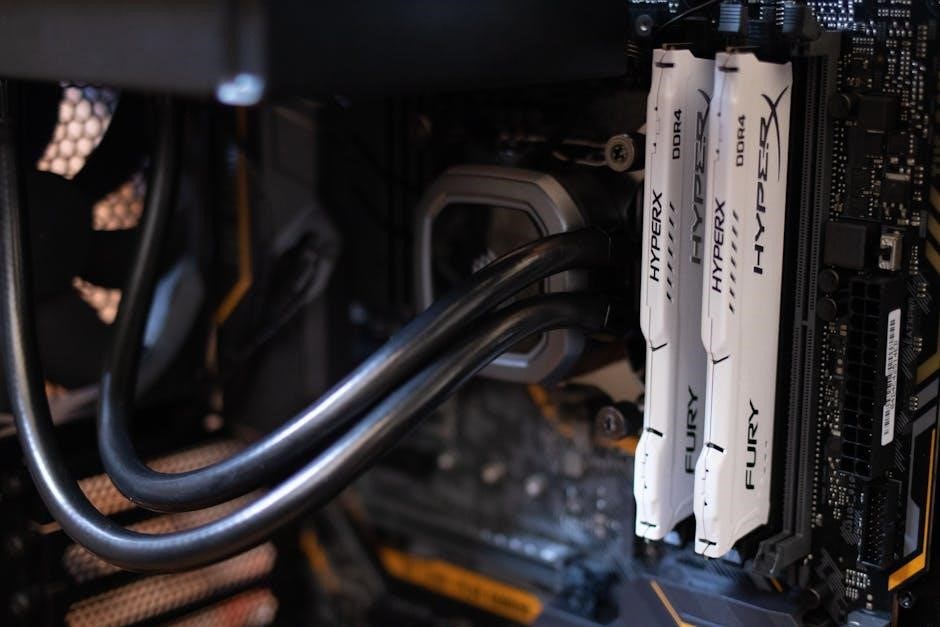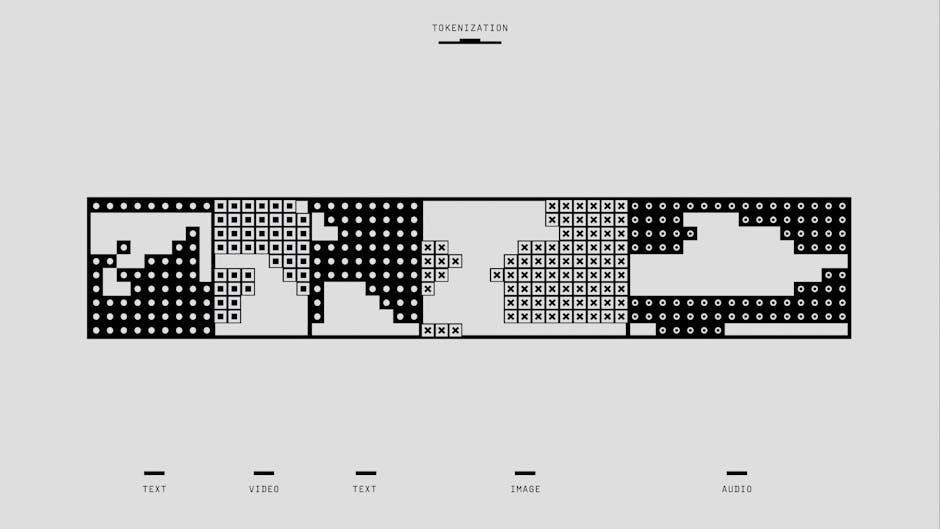The circulatory system, also known as the cardiovascular system, is a complex network responsible for transporting blood, oxygen, and nutrients throughout the body. It consists of the heart, blood, and blood vessels, working together to maintain life-sustaining functions. This system is essential for delivering energy and nutrients to cells and removing waste products, ensuring overall health and vitality.
1.1 The Heart
The heart is a muscular organ that acts as the circulatory system’s central pump. It has four chambers: the left and right atria, and the left and right ventricles. The heart’s primary function is to pump blood through the blood vessels, supplying oxygen and nutrients to tissues and organs. Its rhythmic contractions ensure continuous blood circulation, maintaining life and overall bodily functions. Worksheets often include labeling diagrams of the heart’s structure to aid in understanding its role in the circulatory system.
1.2 Blood
Blood is a vital component of the circulatory system, consisting of red blood cells, white blood cells, and plasma. It transports oxygen, nutrients, and hormones while removing waste products. Blood types, such as A, B, AB, and O, are determined by specific antigens. Worksheets often include activities to label blood components and understand their functions, enhancing learning through interactive exercises.
1.3 Blood Vessels
Blood vessels are tubes that carry blood throughout the body, forming a network of pathways for circulation. They include arteries, veins, and capillaries. Arteries transport oxygen-rich blood away from the heart, while veins return oxygen-depleted blood to the heart. Capillaries enable the exchange of oxygen, nutrients, and waste products with tissues. Understanding blood vessels is crucial for comprehending the circulatory system’s structure and function, as highlighted in educational worksheets.

The Circulatory System Worksheet
The circulatory system worksheet is an educational tool designed to help students understand the heart, blood, and blood vessels. It includes interactive exercises, diagrams, and questions to enhance learning and retention of key concepts related to the cardiovascular system.
2.1 How to Use the Worksheet
The circulatory system worksheet is designed for interactive learning. Start by labeling diagrams of the heart and blood vessels. Answer multiple-choice questions about blood circulation and vessel types. Match terms like “arteries” and “veins” with their functions. Use the word bank to complete fill-in-the-blank questions. Review the answer key to check progress and understand concepts better. Ideal for students of all ages!
2.2 Key Concepts Covered
The worksheet covers essential topics such as the structure and function of the heart, types of blood vessels, and blood composition. It includes identifying arteries, veins, and capillaries, understanding blood circulation, and recognizing the role of plasma and blood cells. Additionally, it addresses disorders like hypertension and atherosclerosis, ensuring a comprehensive understanding of the circulatory system. Interactive activities reinforce learning through practical exercises.
2.3 Importance of Interactive Learning
Interactive learning enhances engagement and understanding through hands-on activities like labeling diagrams, completing worksheets, and participating in board games. These exercises encourage active participation, fostering a deeper grasp of the circulatory system. By involving students in practical tasks, learning becomes more dynamic, helping to retain information and develop critical thinking skills in a collaborative and enjoyable environment. This approach caters to diverse learning styles, ensuring comprehensive comprehension.

Structure and Function of the Circulatory System
The circulatory system consists of the heart, blood, and blood vessels, working together to transport oxygen and nutrients to cells and remove waste products efficiently throughout the body.
3.1 Blood Circulation Process
The blood circulation process involves the heart pumping blood through arteries, veins, and capillaries. Oxygen-rich blood from the lungs is pumped to the body’s tissues, while deoxygenated blood returns to the heart and lungs for oxygenation. This continuous cycle ensures cells receive essential nutrients and oxygen, maintaining proper bodily functions and overall health. The process is vital for sustaining life and energy production.
3.2 Role of the Heart
The heart is the central organ of the circulatory system, acting as a pump to circulate blood throughout the body. It receives deoxygenated blood from veins and pumps oxygenated blood through arteries. The heart’s four chambers ensure efficient blood flow: the left and right atria receive blood, while the left and right ventricles pump it out. Valves regulate blood direction, maintaining circulation and supplying oxygen and nutrients to tissues.
3.3 Blood Vessel Types and Roles
The circulatory system includes three types of blood vessels: arteries, veins, and capillaries. Arteries carry oxygen-rich blood away from the heart to various tissues. Veins return oxygen-depleted blood back to the heart. Capillaries enable the exchange of oxygen, nutrients, and waste products between blood and cells. Each vessel type is structured to perform its specific function efficiently, ensuring proper circulation and maintain overall health.

Components of Blood
Blood consists of blood cells and plasma. Blood cells, including red, white, and platelets, perform vital functions like oxygen transport, immunity, and clotting. Plasma carries nutrients and hormones, ensuring proper bodily functions and overall health.
4.1 Blood Cells
Blood cells are essential components of the circulatory system, consisting of red blood cells (RBCs), white blood cells (WBCs), and platelets. RBCs transport oxygen, WBCs fight infections, and platelets aid in clotting. These cells are produced in the bone marrow and play critical roles in maintaining health, preventing disease, and ensuring proper bodily functions. Their balance is vital for overall well-being and survival.
4.2 Plasma
Plasma, the liquid portion of blood, makes up approximately 55% of its total volume. It is primarily composed of water, with smaller amounts of proteins, nutrients, hormones, gases, waste products, and clotting factors. Plasma serves as a medium for transporting blood cells, nutrients, and hormones throughout the body, while also maintaining blood pressure and facilitating blood clotting when necessary. Its role is vital for overall bodily functions and health maintenance.
Functions of the Circulatory System
The circulatory system transports oxygen and nutrients to cells, removes waste products, regulates body temperature, and maintains immune function by circulating white blood cells and antibodies.
5.1 Transporting Oxygen and Nutrients
The circulatory system plays a vital role in delivering oxygen and nutrients to cells throughout the body. Blood, rich in oxygen from the lungs, is pumped by the heart through arteries to capillaries, where oxygen and nutrients diffuse into tissues. Simultaneously, deoxygenated blood collects carbon dioxide and waste, returning to the heart and lungs for replenishment and detoxification, ensuring proper cellular function and overall health.
5.2 Maintaining pH Balance
The circulatory system helps maintain the body’s pH balance by transporting blood, which acts as a buffer to regulate acid-base levels. Plasma, a component of blood, neutralizes excess acids or bases, ensuring proper cellular function. Additionally, the kidneys filter and excrete waste products, further stabilizing the body’s pH, which is crucial for maintaining homeostasis and overall health.
5.3 Supporting Immune Function
The circulatory system plays a vital role in supporting immune function by transporting white blood cells, which defend the body against infections and diseases. Blood circulation ensures these cells reach areas where they are needed, while also delivering nutrients and removing pathogens. This system works in tandem with the lymphatic system to protect the body and maintain overall health effectively;
Types of Blood Vessels
The circulatory system includes three main types of blood vessels: arteries, veins, and capillaries. Arteries carry oxygen-rich blood away from the heart, while veins return oxygen-depleted blood to it. Capillaries enable nutrient and waste exchange between blood and cells, ensuring proper bodily functions and overall health.
6.1 Arteries
Arteries are thick-walled blood vessels that carry oxygen-rich blood away from the heart to the rest of the body. They are elastic and muscular, withstanding high blood pressure from heart contractions. The largest artery, the aorta, branches into smaller arterioles, which regulate blood flow to specific tissues. Arteries play a crucial role in maintaining circulation and ensuring oxygen delivery to cells, supporting vital bodily functions and overall health.
6.2 Veins
Veins are blood vessels that carry deoxygenated blood back to the heart, except for the pulmonary veins, which transport oxygen-rich blood. They contain one-way valves to prevent backflow, ensuring efficient blood circulation. Veins have thinner walls than arteries and rely on muscle contractions to move blood toward the heart, playing a vital role in maintaining the body’s circulatory balance and overall health.
6.3 Capillaries
Capillaries are the smallest blood vessels, connecting arterioles to venules, and are crucial for the exchange of oxygen, nutrients, and waste products with tissues. Their thin walls allow for efficient diffusion, enabling cells to receive essential resources and rid themselves of carbon dioxide. Capillaries play a vital role in maintaining cellular health and overall bodily functions, ensuring proper circulation and nutrient delivery.

Disorders of the Circulatory System
The circulatory system can be affected by various disorders, including hypertension and atherosclerosis. These conditions can lead to serious health issues, emphasizing the importance of early detection and management.
7.1 Hypertension
Hypertension, or high blood pressure, is a common circulatory disorder where the force of blood against artery walls is excessively high. It can lead to heart disease, strokes, and kidney damage if left untreated. Managing factors like diet, exercise, and stress can help control hypertension and reduce its risks. Early detection through regular check-ups is crucial for maintaining cardiovascular health.
7.2 Atherosclerosis
Atherosclerosis is a condition where plaque, composed of cholesterol and fatty substances, builds up inside artery walls, leading to their hardening and narrowing. This restricts blood flow, increasing the risk of heart attacks and strokes. It is a major contributor to cardiovascular diseases and can be managed through lifestyle changes, such as a healthy diet, regular exercise, and avoiding smoking.
Resources and Activities
Explore a variety of educational tools, including circulatory system worksheets and activity sheets, available on platforms like Kenhub and educational websites. These resources offer engaging ways to learn about the circulatory system through diagrams, quizzes, and interactive games, making complex concepts accessible and fun for students of all levels.
8.1 Where to Find Worksheets
Circulatory system worksheets are available on educational websites like Kenhub, Homeschool Dressage, and Education.com. These platforms offer free downloadable PDF resources, including labeled diagrams, multiple-choice questions, and interactive activities. They cater to various grade levels, providing comprehensive learning tools for students to explore the circulatory system in an engaging and structured manner.
8.2 Additional Learning Activities
Beyond worksheets, engage with interactive board games, reading materials, and quizzes to deepen understanding of the circulatory system. Utilize diagrams and labeling exercises from platforms like Kenhub for visual learning. These activities promote hands-on engagement and reinforce key concepts, making the learning process interactive and enjoyable for students of all levels.
